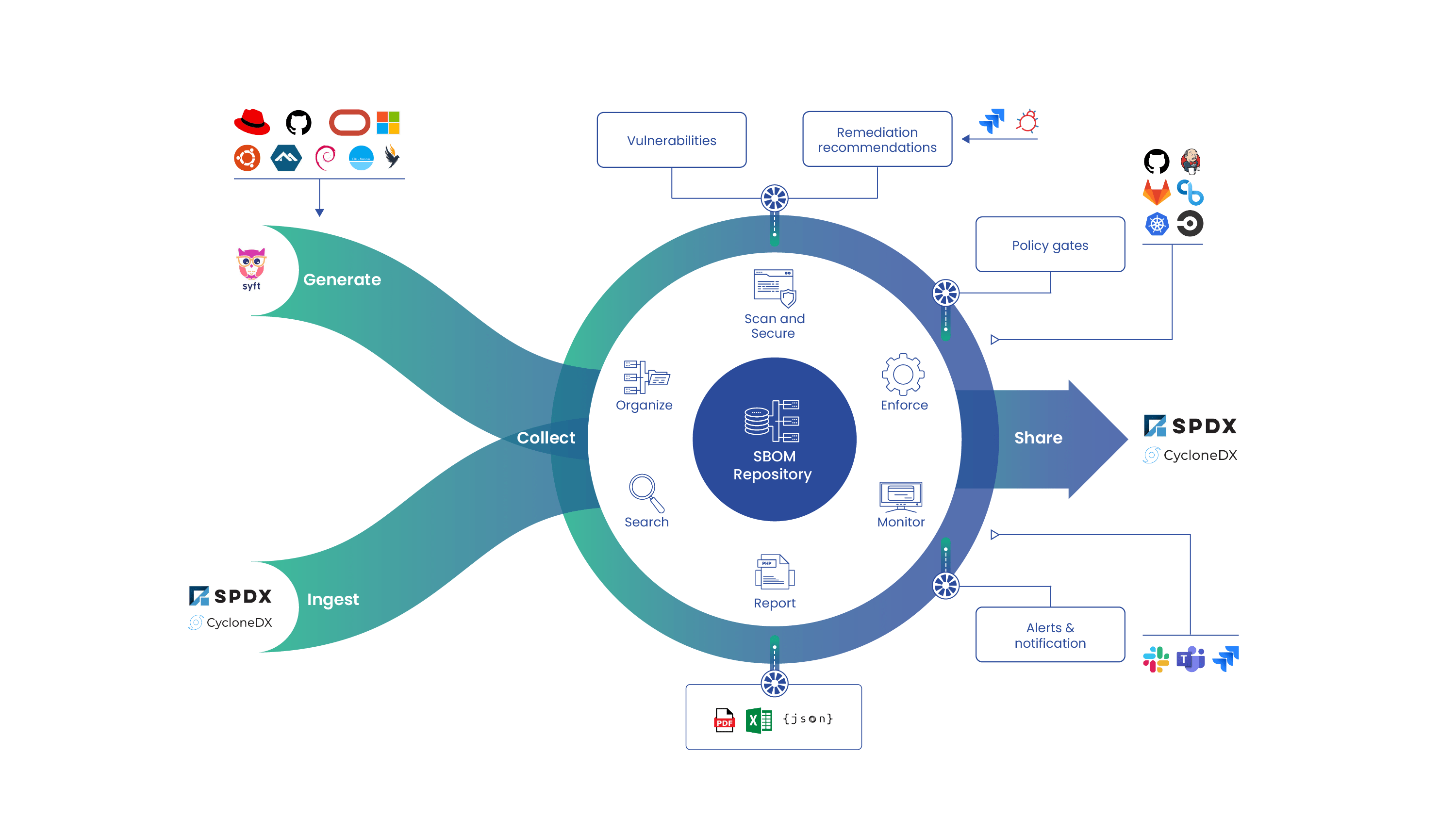In the world of software bills of materials (SBOM) there are currently two major standards: Software Package Data Exchange (SPDX) and CycloneDX. SPDX is a product of the Linux Foundation. It’s been a standard for over ten years now. CycloneDX is brought to us by the OWASP project. It’s a bit newer than SPDX, and just as capable. If you’re following the SBOM news, these two formats are often topics of discussion.
It is expected that anyone who is creating or consuming SBOMs will probably use one of these two formats to ensure a certain amount of interoperability. If you expect the consumers of your software to keep track of your SBOM, you need a standard way of communicating. Likewise, if we are expecting an SBOM from our vendors, we want to make sure it’s in a format we can actually use. This is one of those cases where more isn’t better, two is plenty.
If you’re familiar with Anchore’s open source projects Syft and Grype, there’s also another format you’ve probably seen known as the Syft lossless SBOM. This format has been tailored specifically to the needs of Syft and Grype when the projects were just starting out. It’s a great format and contains a huge amount of information, but there aren’t a lot of tools out there that can generate or consume this SBOM format today.
When we think about vulnerability scanners, we tend to think about pointing a scanner at a container, or directory, or even a source repo, then scanning that location to find vulnerabilities in the dependencies. Grype has a neat trick though, it can scan an SBOM for vulnerabilities. This means instead of having to first scan the files to identify them, then figure out if any have vulnerabilities. Grype can skip over that identification step by using an SBOM. Most of the time a vulnerability scanner spends is in this identification stage, scanning an SBOM for vulnerabilities is incredibly fast.
Initially Grype was only able to use a Syft format SBOM to scan for vulnerabilities. This is awesome, but we come back to the problem of what happens when a vendor gives us an SBOM in SPDX or CycloneDX format? The easy answer is to support those formats too of course. The next obvious question is which format should Grype support next; SPDX or CycloneDX? Since making a decision is hard, and SBOM formats are like children, you can’t really pick a favorite, it was decided to support both!
If you download the latest version of Grype you can now use it to scan your SPDX and CycloneDX SBOMs for vulnerabilities. If a vendor ships you an SBOM, it can be fed directly into Grype. We’re pretty sure Grype is the first open source vulnerability scanner that supports both SPDX and CycloneDX at the time of writing this. We think that’s a pretty big deal!
Now, it should be noted that this functionality is very new. There are going to be bugs and difficulties scanning SPDX and CycloneDX SBOMs. We would be fools to pretend the features are perfect. However, Grype is also an open source project, you don’t have to sit on the sidelines and watch. Open source is a team sport. If you scan an SBOM with Grype and run into any problems, please file a bug here. You can even submit a patch if that’s more your style, we love pull requests from our community.
Stay tuned for even more awesome features coming soon. We’re just getting started!




